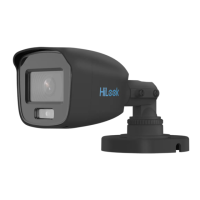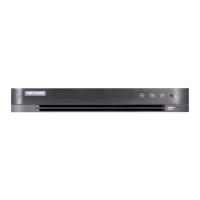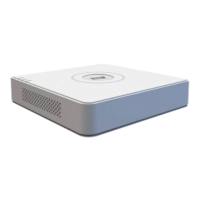POSIX support; and also elimination of FAT and HPFS file system limitations.
NTSC
NTSC (National Television Standards Committee) is a color TV broadcast standard with
30 fps frame rate, and is widely used in North-America, Japan, and South-American
countries.
PAL
PAL (Phase Alternation by Line) is is a color TV broadcast standard with 25 fps frame
rate, and is widely used in UK, East and Middle Asia, Europe and African countries which
adopts 50Hz AC power supply.
.WAV
Short for Waveform audio format, a kind of Digital Audio File Formats
Patrol
PTZ moving track
Preset
Preset PTZ position
PTZ
A mechanism device to pan, tilt or zoom the cameras,
Baud Rate
Baud rate is the number of bits transmitted per second, i.e. 300 bit/s stands for 300 bits
are sent per second; and if the PTZ protocol needs 4800 as baud rate, then it represents the
clock cycle is 4800Hz, and the serial port communication sampling rate is also 48000HZ.
Usually the baud rate for telephone wire is 14400, 28800 and 36600, the baud rate can be set
as much higher than these values, but the baud rate is inversely proportional to the
maximum transmission distance. High bit rate is usually used for short distance
communication, i.e. GPIB device communication.
Data Bit
Data bit is a measure of the actual data bits in communication. When the computer
sends a packet, the actual data bits is not 8 digits, and the standard value is 5, 7 or 8,
depending on how you want to configure the transmission of information. For instance, the
standard ASCII code is 0 to 127 (7 digits), and the extended ASCII code is 0 to 255 (8 digits).
If the data using a simple text (standard ASCII code), then each data packet uses 7 digits
information. Each package stands for 1 byte, including start / stop bit, data bit and parity bit.
As the actual data digits depend on the communication protocol, the term "package" is for
any communications.
Stop Bit
Stop bit is used to mark the last digits of the package, whose typical value is 1, 1.5 or 2.
AS data transmission is schedule on transmission lines, and each device has its own clock, it
is likely that communication between the two devices will not in complete synchronization.
Thus the stop bit does not only stand for end of the transmission, but also provides system
clock synchronization checking. The larger the stop digits, the more endurance of different
clock synchronization, yet slower the data transmission.
Parity Bit
There is a simple error detection way for serial communication which includes 4
detection mode: even, odd, high and low. (Of course, no parity bit is also allowed.) On even

